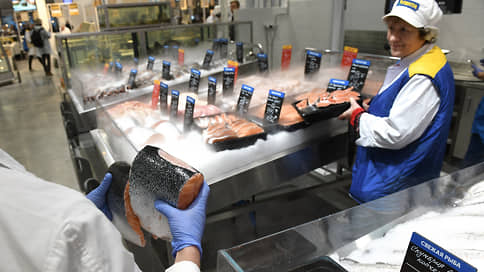In January-July 2023, imports of fish products from Russia grew by 23% year-on-year
[ad_1]

After last year’s failure in Russia of fish imports, its volumes began to recover. In January-June, 345 thousand tons of products were imported, which is 23% more year on year. About a quarter of the volume came from the Faroe Islands, which remain a major exporter on the Russian market. Deliveries from India and Saudi Arabia increased by three to seven times, from where mainly inexpensive types of shrimp are imported. However, a new round of ruble depreciation by the end of August may lead to a decrease in imports, experts predict.
From the data of the Fish Union available to Kommersant, it follows that in January-July 2023, imports of fish products to the Russian Federation increased by 23% year-on-year, to 345 thousand tons, and its total value – by 17%, to $ 1.3 billion. The Federal Agency for Fishery also notes this trend, adding that during this period, the supply of frozen fish increased by 46% year-on-year, to 153 thousand tons, crustaceans and mollusks – twice, to 73 thousand tons.
Most noticeable – by 52%, up to 60 thousand tons – imports to the Russian Federation increased the Faroe Islands. For the seven months of 2023, the share of this Danish autonomy was 24% in total imports against 20% a year earlier. The Faroe Islands did not fall under the food embargo imposed by Russia in 2014 on a number of goods from the EU as a countermeasure to Western sanctions.
Turkey also increased deliveries by 11%, up to 26 thousand tons, moving from third to second place in the list of the main countries exporting fish products to the Russian Federation. In January-July of this year, according to the Federal Agency for Fisheries, 73% of all deliveries from Turkey were fresh and chilled salmon species. Most are aquaculture trout, says one importer.
A significant increase in imports is observed from Ecuador – by 44% yoy, up to 20.5 thousand tons, and Argentina – by 39% yoy, up to 12.5 thousand tons. At the same time, China, traditionally the leader in deliveries to the Russian Federation, exported 30 thousand tons to the Russian Federation – the same amount was in the same period last year. The Fish Union notes that China does not increase fish exports due to the serious volatility of the ruble exchange rate since the beginning of this year.
Vietnam, which consistently ranked among the top 5 major fish suppliers to the Russian Federation, on the contrary, reduced volumes by 34%, to 15,000 tons. The country has reduced the supply of tilapia and pangasius due to uncompetitive prices in the Russian market, said Mikhail Burmistrov, CEO of Infoline-Analytics. On the other hand, from Asian countries, South Korea doubled its supplies to the Russian Federation, to 4.5 thousand tons. The Federal Agency for Fisheries says that 71% of the products from this country were frozen fish.
A year ago, the situation with the import of fish products was the opposite. According to the Fish Union, in January-July 2022, imports amounted to 281 thousand tons, which is 25% less year-on-year. As a result, in general, in 2022, according to the union, the share of imports in the total consumption of fish products by Russians decreased to 45% against 49% a year earlier.
Vitaly Kornev, President of the Association of Fish Market Production and Trade Enterprises, explains last year’s failure with the refusal of many foreign suppliers and container shipping operators to work with Russia immediately after the outbreak of hostilities in Ukraine. “But already in the second half of the year, supplies began to improve, which was facilitated, among other things, by the growth of the ruble exchange rate (after the collapse in the spring of last year.— “b”),” says the expert.
The Federal Agency for Fishery also notes a surge in the supply of fish products in January-July 2023 from Saudi Arabia (seven times, up to 5.9 thousand tons) and India (three times, up to 14.8 thousand tons). “Now India needs to increase the supply of any product to the Russian Federation in order to close the gap in the balance of payments against the backdrop of an increase in the supply of Russian oil products,” Mikhail Burmistrov believes.
Almost the entire volume from India and Saudi Arabia falls on frozen shrimp. Now the share of these products, also imported from Ecuador, Argentina and China, in total imports is 11%, and this figure will grow, the Fish Union does not exclude. They explain this by a decrease in wholesale prices for shrimp. In retail, there is now a steady demand for frozen shrimp, Mikhail Burmistrov confirms. But, according to him, the effect of a new round of weakening of the ruble will affect the rise in price of all imported fish products. For this reason, according to the results of August, the Fish Union predicts that import volumes may sag.
[ad_2]
Source link





